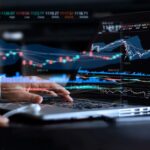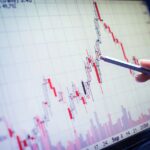Algorithmic Trading, a cornerstone of modern financial markets, utilizes complex algorithms to execute trading orders at unparalleled speed and precision, outperforming traditional trading methods and transforming market landscapes.
Definition of Algorithmic Trading
This Trading refers to the use of advanced mathematical models and computer algorithms to execute trading orders with optimal speed and accuracy, maximizing financial gains. Unlike traditional trading, where decisions are made by humans, This Trading leverages computational algorithms to make trading decisions, reducing human error and emotional influence on trading activities.
The Mechanism of Algorithmic Trading
Developing Algorithmic Trading involves creating sophisticated algorithms capable of making split-second trading decisions based on predetermined criteria. These algorithms can range from High-Frequency Trading algorithms, exploiting small price discrepancies, to Arbitrage algorithms, capitalizing on price differences between markets.
Advantages of Algorithmic Trading
It brings unparalleled speed, accuracy, and efficiency, executing trades in milliseconds, minimizing slippage, and reducing transaction costs, allowing traders to seize fleeting market opportunities and optimize financial gains.
Risks and Challenges
Despite its advantages, Algorithmic Trading poses significant risks, including market abuses and overfitting, where algorithms are overly optimized to past data. Additionally, technological risks, such as system failures, can have catastrophic impacts, disrupting markets and inducing substantial financial losses.
Algorithmic Trading Strategies
Several strategies exist within Algorithmic Trading, including Momentum-based Strategies, exploiting trends in market prices, and Statistical Arbitrage, leveraging price inefficiencies between related securities. Mean Reversion Strategies capitalize on price deviations from historical averages, betting on price corrections.
Creating a Successful Algorithmic Trading Strategy
Developing a triumphant Algorithmic Trading strategy requires meticulous backtesting, robustness testing, and prudent risk management. Considerations like transaction costs, slippage, and market impact must be accurately modeled to avoid overoptimization and ensure the strategy’s future viability.
Algorithmic Trading Software and Technologies
Algorithmic traders often utilize programming languages like Python and R, leveraging their extensive libraries and community support. Platforms like MetaTrader and NinjaTrader offer comprehensive tools for developing, backtesting, and deploying trading algorithms. These solutions provide traders with a conducive environment to implement their Algorithmic Trading strategies effectively.
Ethical Considerations and Regulations
Algorithmic Trading raises several ethical questions related to market fairness and integrity. Regulatory bodies worldwide are continually evolving their frameworks to curb market abuses and ensure a level playing field, promoting transparency, and maintaining market stability.
Impact on Financial Markets
Algorithmic Trading significantly impacts financial markets, enhancing market liquidity, reducing bid-ask spreads, and contributing to efficient price discovery. However, it also induces increased market volatility and raises concerns over market manipulation and flash crashes.
Algorithmic Trading stands as a revolutionary component in financial markets, offering numerous advantages but also posing substantial risks. Its multifaceted nature and profound impact on market dynamics necessitate a comprehensive understanding and prudent approach. As we venture further into the era of digital finance, the continuous evolution and refinement of Algorithmic Trading strategies will remain pivotal for achieving trading excellence in the intricate world of financial markets.
No, advancements in technology have made Algorithmic Trading accessible to individual traders as well.
Algorithmic Trading has evolved from simple rule-based algorithms to sophisticated machine learning models, continually adapting to changing market dynamics.
Absolutely, numerous platforms and tools are available, allowing individual traders to develop and implement Algorithmic Trading strategies.
Beginning with Algorithmic Trading involves learning programming languages, understanding financial markets, and utilizing Algorithmic Trading platforms for backtesting and implementing strategies.















